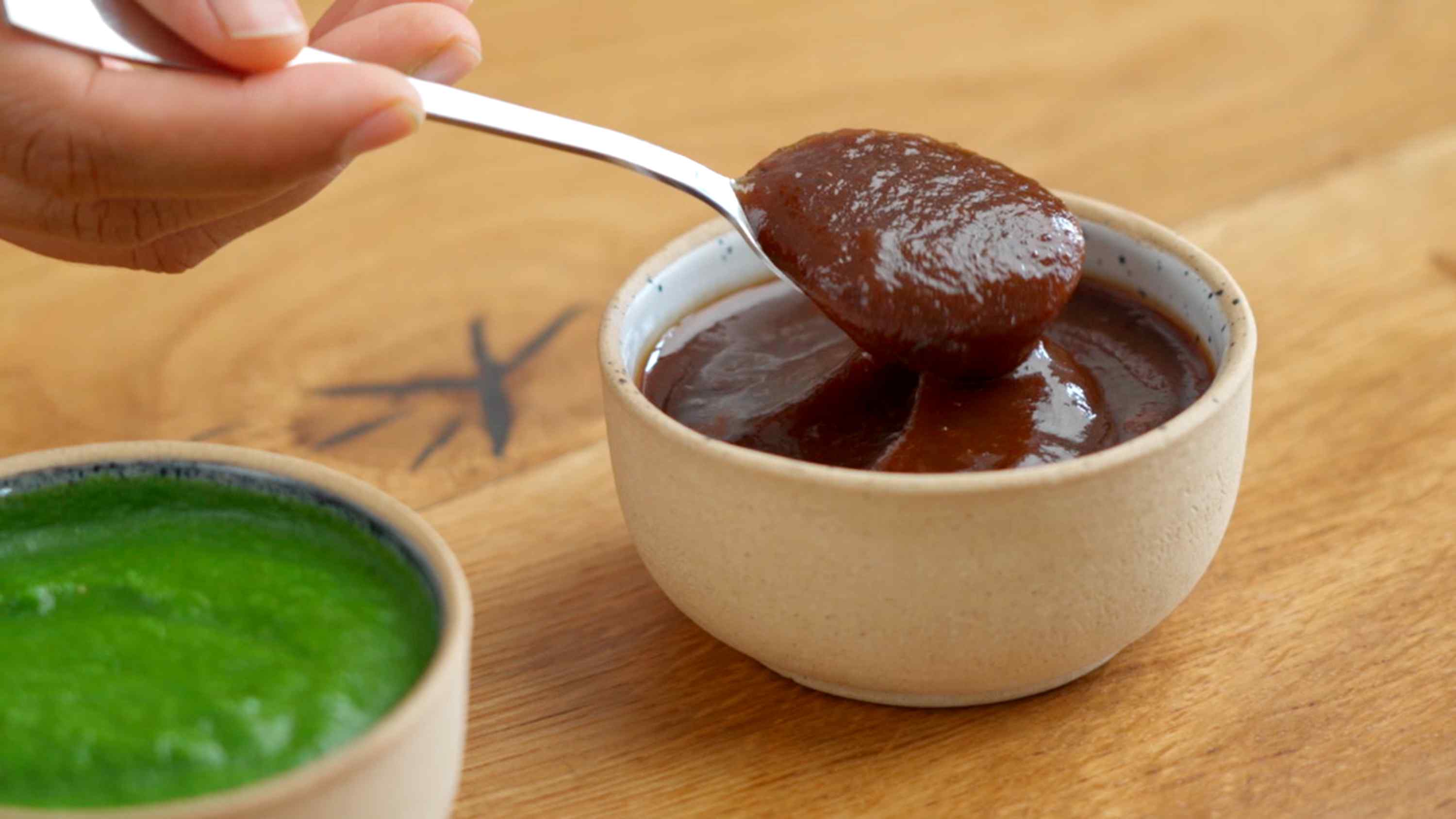This sweet and sour chutney also known as 'saunth' or 'imli ki chutney' is perfect for snacks like samosas, pakoras, and street food dishes or chaat. It's one of the most important chutneys in North Indian cuisine and often makes an appearance alongside the other classic - green mint and coriander chutney. Think of this chutney as India's barbecue sauce - it's sweet, sour, spicy, saucy and goes well with all sorts of fried snacks. Our recipe shows you how you can prepare this chutney at home within minutes. When stored properly this chutney can be stored in the fridge for months.
- 1/2 cup tamarind paste or pulp* (see notes)
- 1/2 cup jaggery**
- 1/4 cup sugar
- 1 tsp oil
- 1/2 tsp cumin seeds (jeera)
- pinch asafoetida (hing)
- 1/2 tsp red chilli powder
- 1 tsp dry ginger powder (saunth)
- 1/2 tsp fennel seeds
- 1/2 tsp dry mango powder (amchur)
- pinch garam masala
- 1/2 tsp black salt or regular salt
- Soak 50g of tamarind pulp from the block tamarind in 150ml hot water to extract the juice or paste for 10-15 minutes (skip this step if using tamarind concentrate or paste).
- After steeping in hot water, pass the tamarind through a sieve to remove any fibres or seeds to obtain a smooth tamarind purée. Once you're done, you should have around 1/2 cup of tamarind purée.
- Coarsely grind the cumin seeds in a mortar and pestle and set them aside.
- Prepare the spice blend by coarsely grinding the fennel seeds in a mortar and pestle. To the fennel seeds add the dried ginger powder, dried mango powder, kashmiri chilli powder, black salt/regular salt and a pinch of garam masala.
- Heat a saucepan on medium heat and add the oil. Once the oil is hot, add the asafoetida and the crushed cumin seeds.
- Immediately add the jaggery, sugar, tamarind paste, spice blend and 1/4-1/2 cup of water.
- Bring the chutney to a simmer till it reaches a thick and saucy consistency.
- You can bottle the chutney in glass jars and store it in the fridge for over a month.
- Serve the chutney cold or at room temperature. Enjoy the chutney with snacks like pakoras, samosas or use it to make chaat.
*Tamarind: We usually buy seedless block tamarind which is easily available at Indian and Asian stores. This is tamarind in its concentrated form and can be stored indefinitely at room temperature when stored in an airtight container. Unlike tamarind available in jars labelled "tamarind concentrate", which is tamarind pulp diluted with water with added preservatives, block tamarind is undiluted tamarind pulp and quite inexpensive. Tamarind is a great ingredient to have in the pantry to brighten up soups, curries and lentil dishes. It's also a common ingredient in many Thai and Indonesian dishes. If you cannot find block tamarind, you can of course use tamarind concentrate from a jar to make this chutney too.
**Jaggery: Commonly known as 'gur' jaggery is unrefined sugar obtained from raw, concentrated sugarcane juice and is a traditional sweetener commonly used in many south Asian cuisines. It contains more minerals and nutrients than regular white sugar and isn't as sweet. Jaggery also has a different flavour profile from refined white sugar with a rich buttery caramel taste with hints of bitterness and some sour notes. If you cannot find jaggery around you, however, you can use brown sugar instead.
